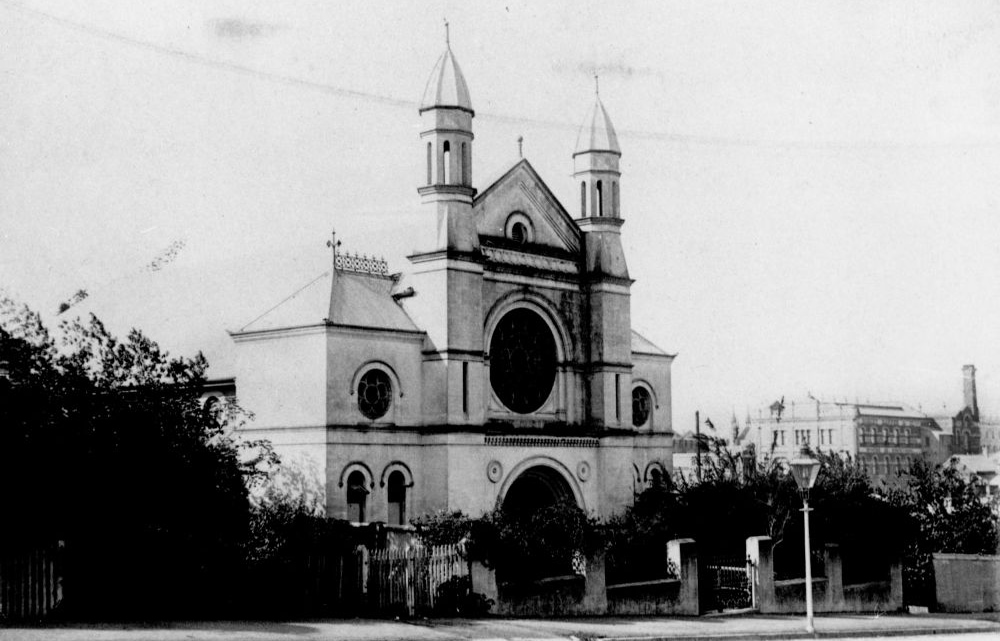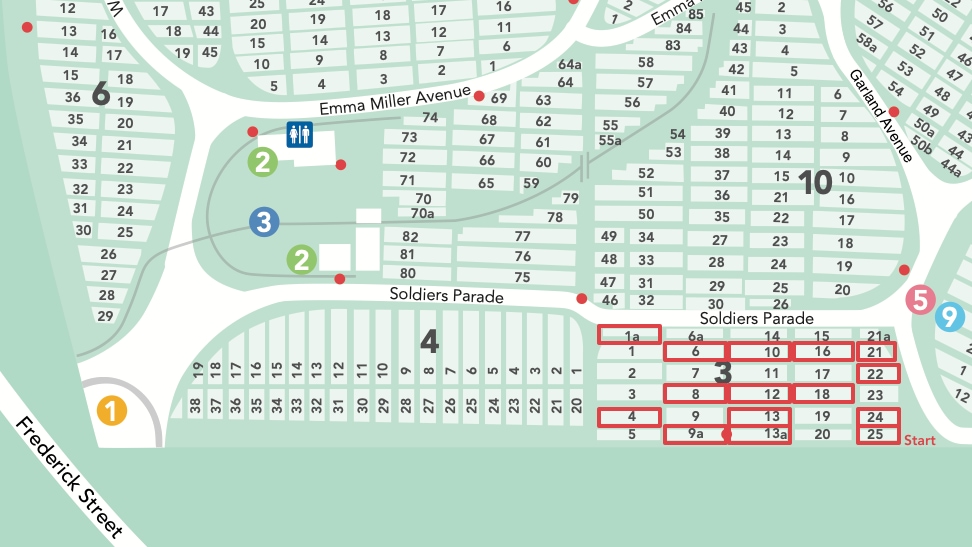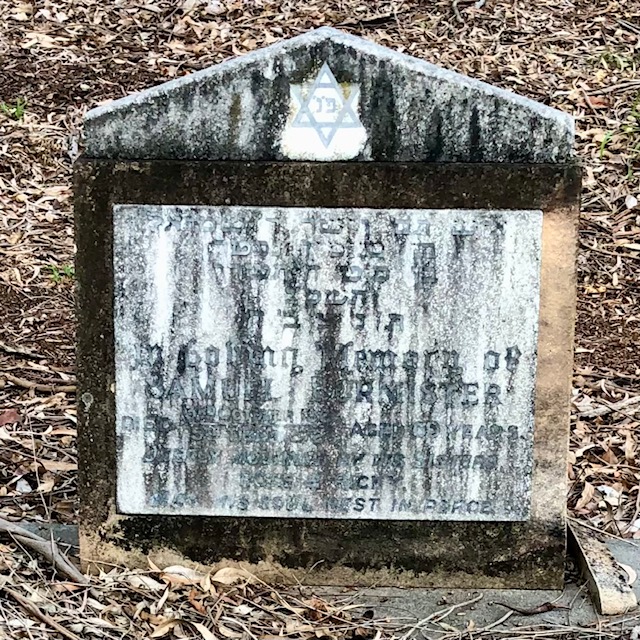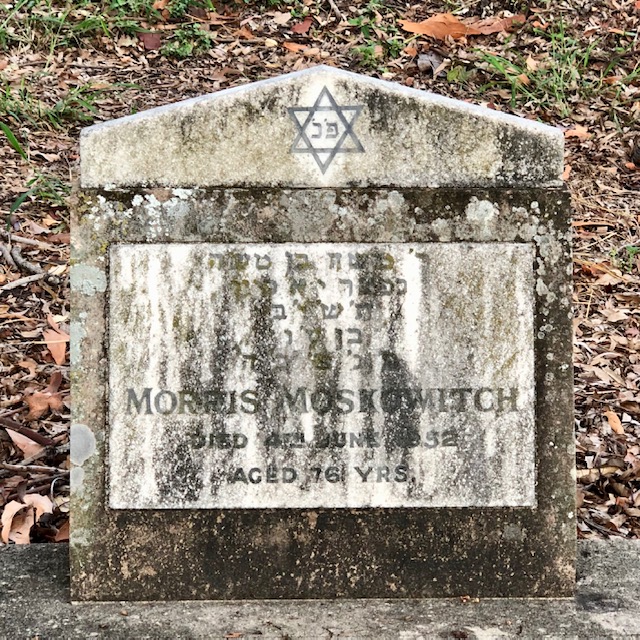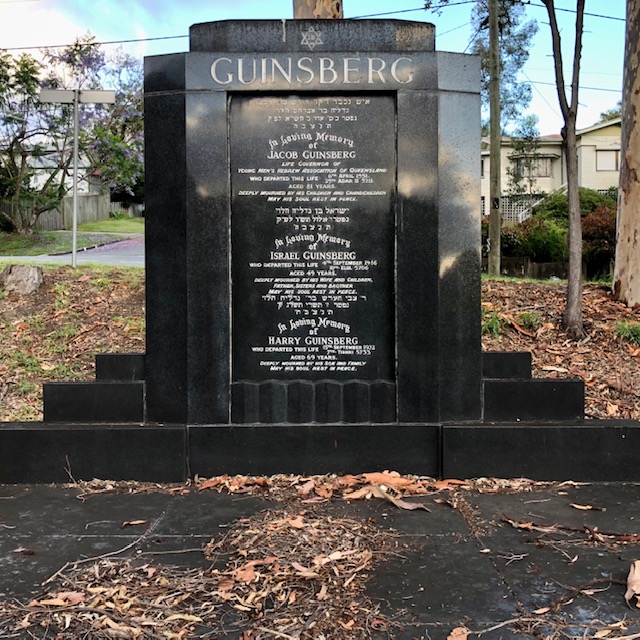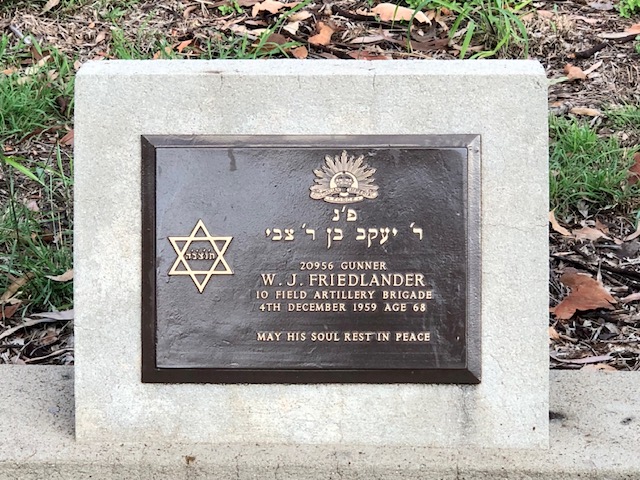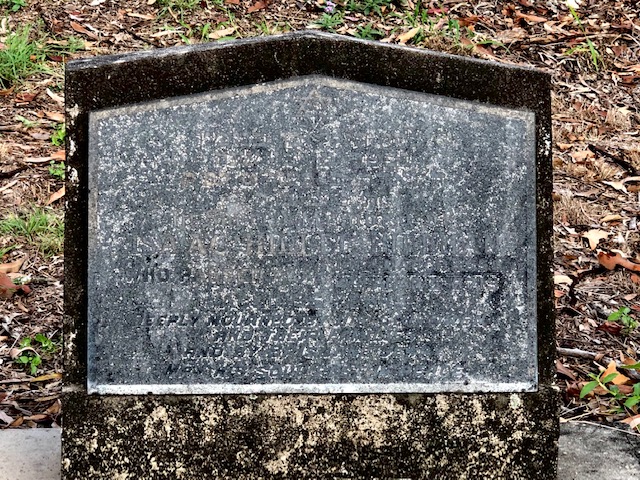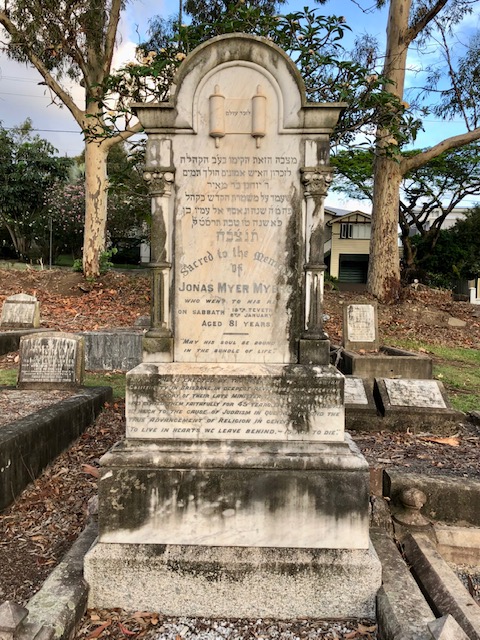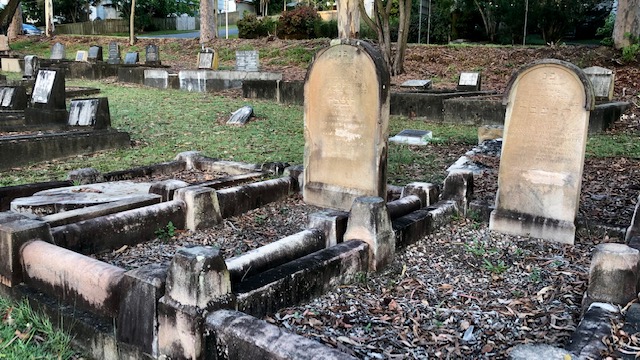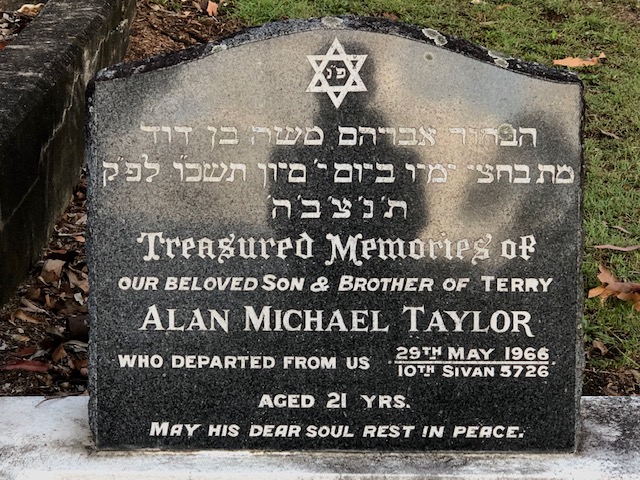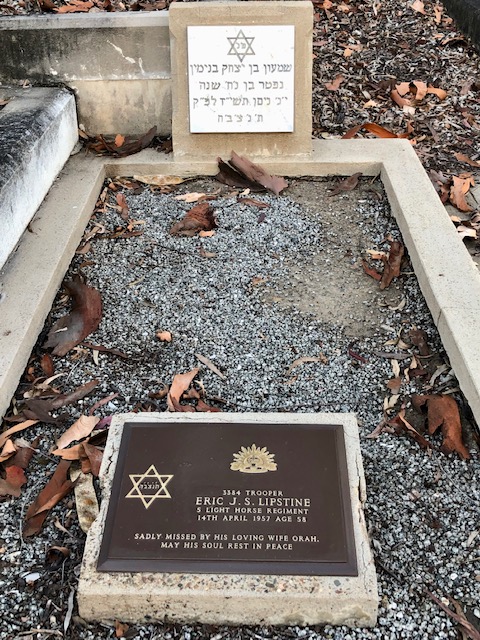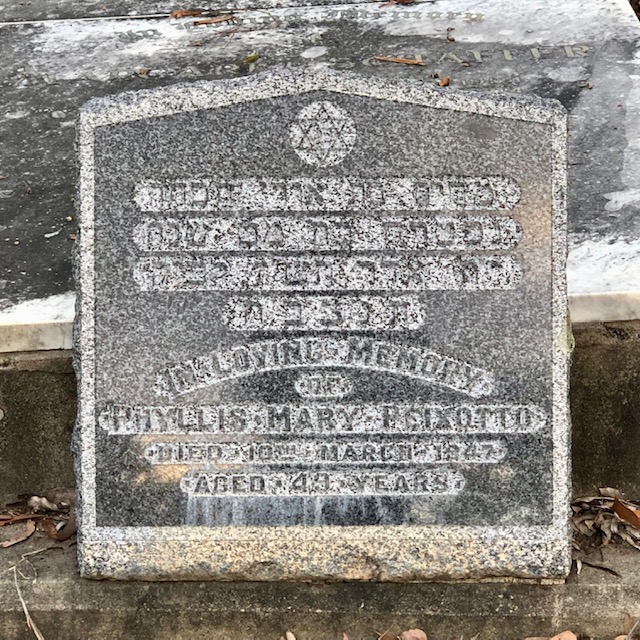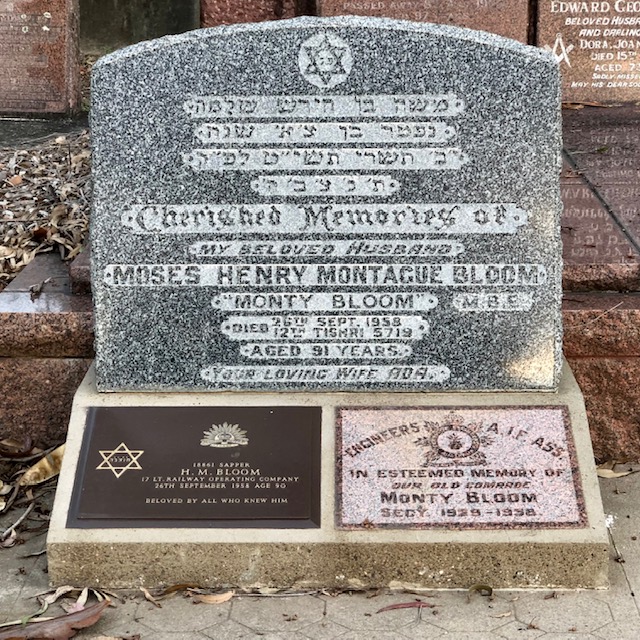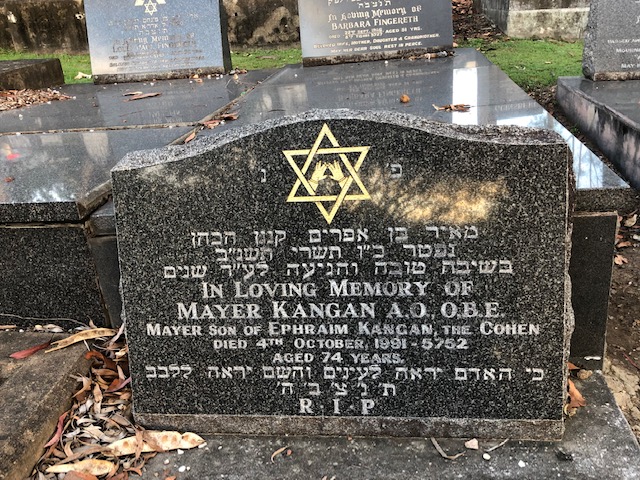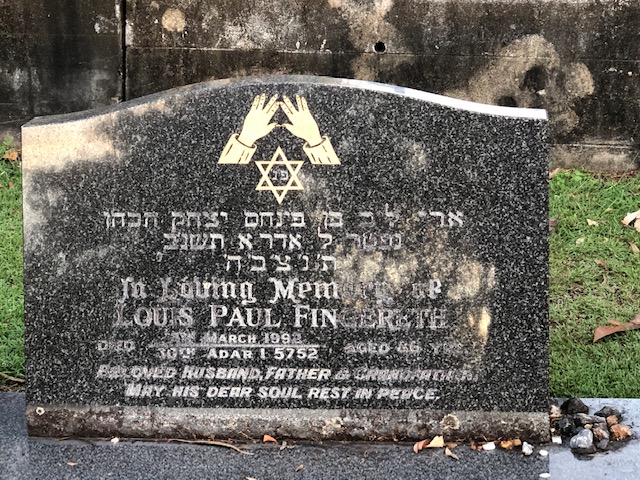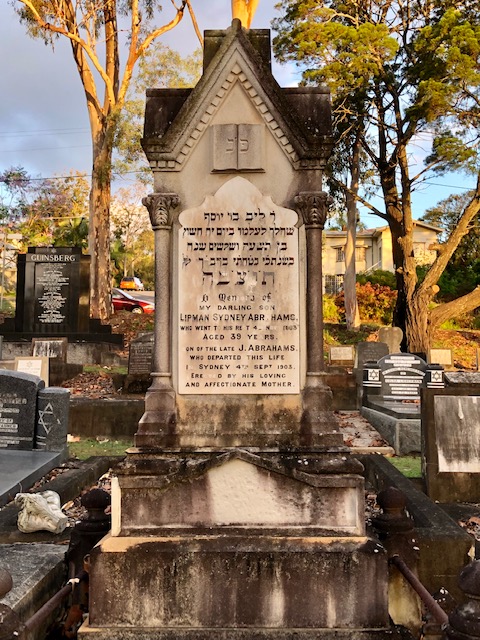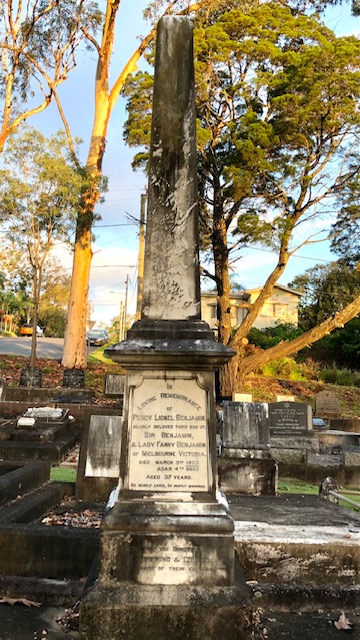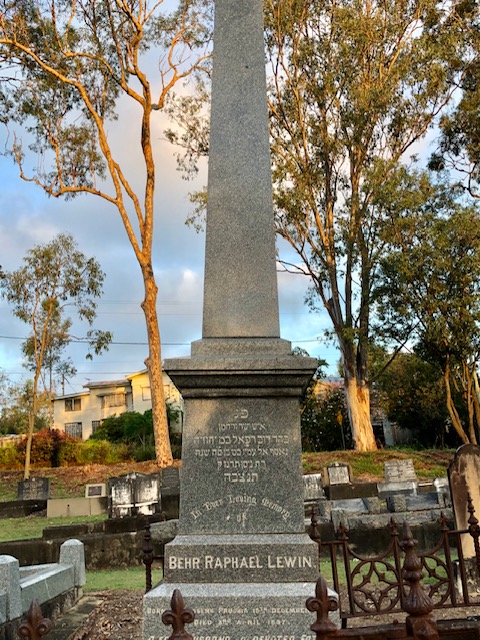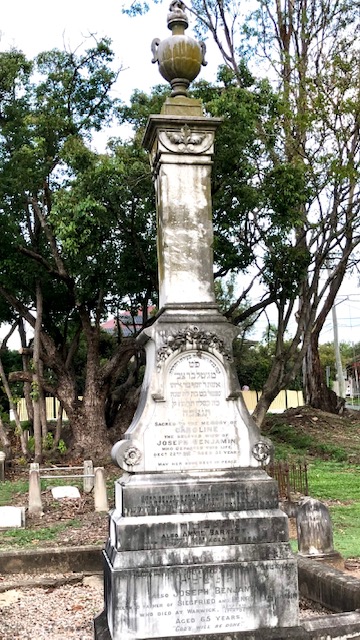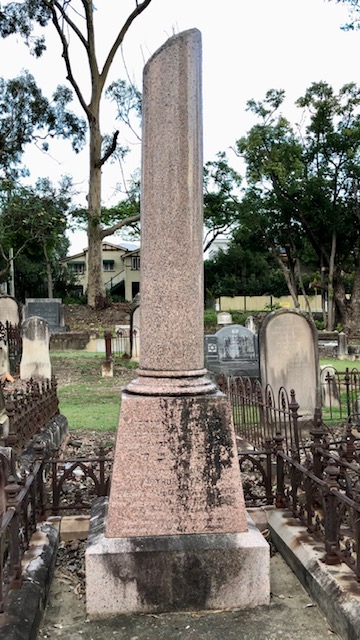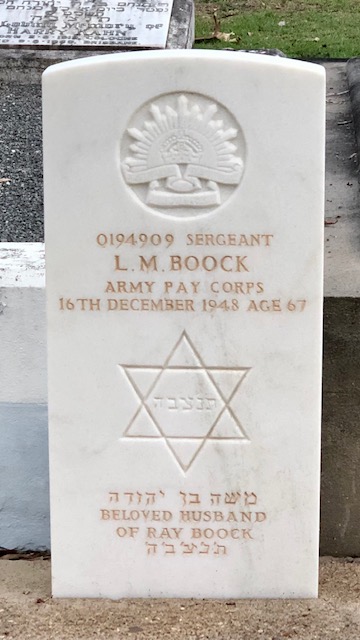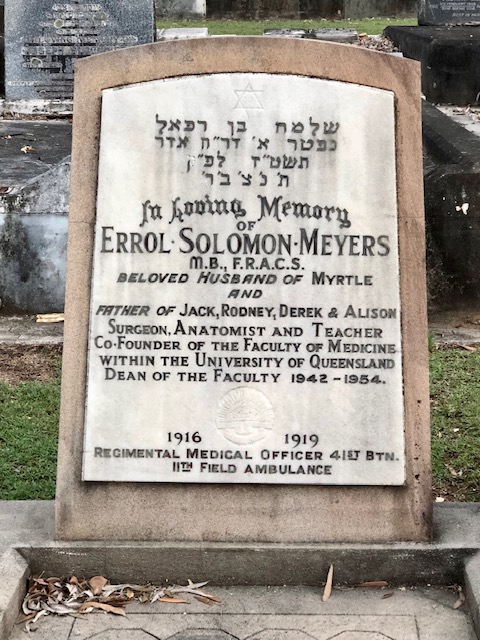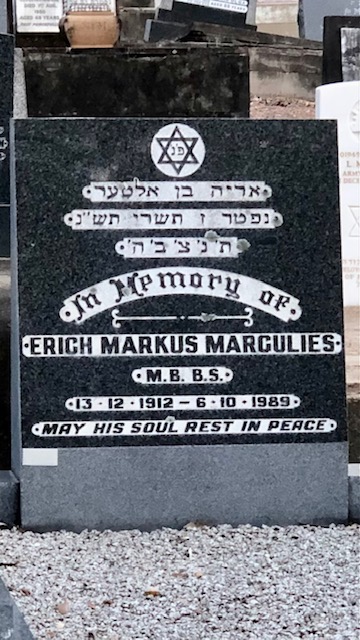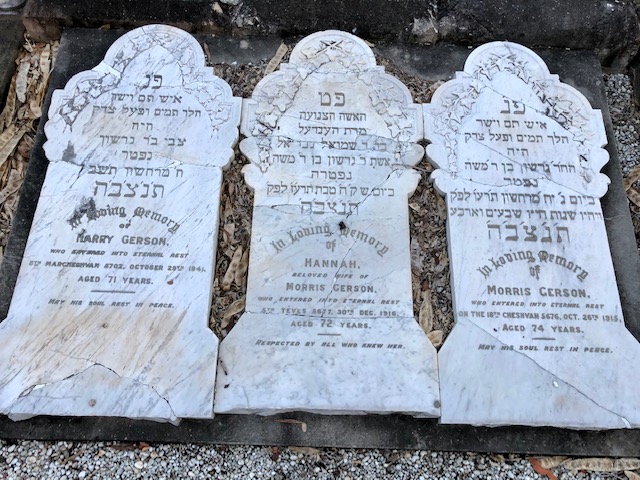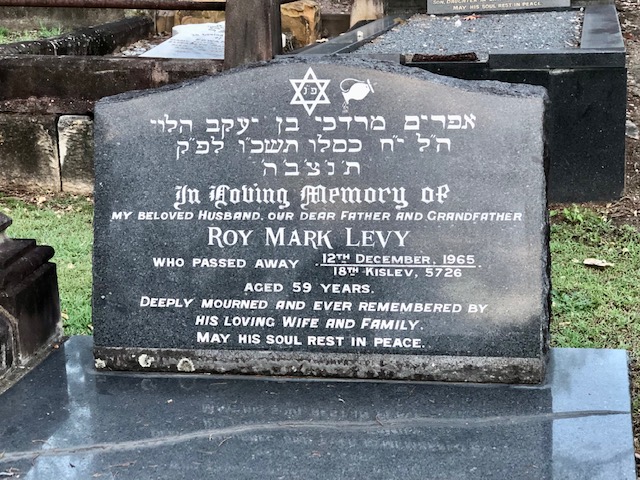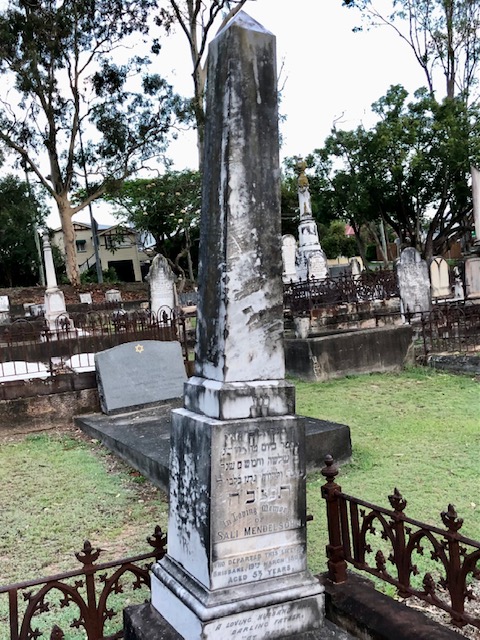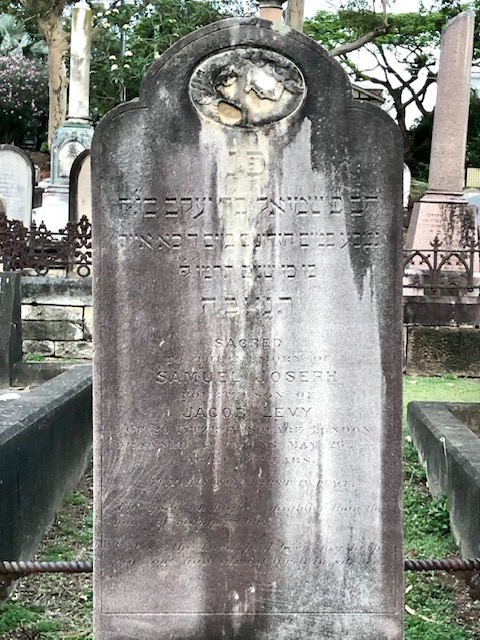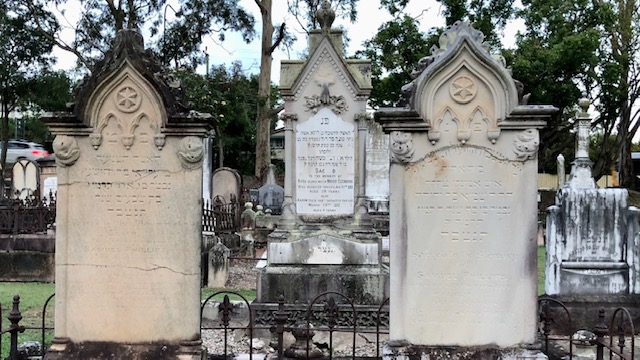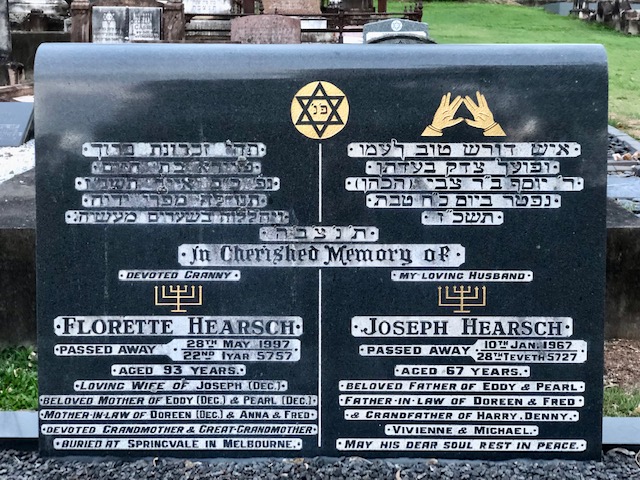The Jewish Walk
A self-guided walk through the Jewish portion of Toowong Cemetery
The Brisbane Synagogue, ca. 1906. Erected in Margaret Street in 1885 and consecrated on 18 July 1886 - State Library of Queensland. Cropped.
This is a Jewish Cemetery. Our population in Queensland is quite small, so its cemeteries number only ten and some have rarely been used. In Brisbane there is one at Toowong dating back from the 1870's and the other is at Mt Gravatt, which opened in 1966. Originally there was a small area in the old Lang Park (Paddington) Cemetery, but that was closed and the 3 known Jewish burials, and their monuments, were brought to Toowong in 1913.
Jewish deceased are buried with their heads toward the East. This has a religious significance. Only one person is buried in each grave. Before the coffin is covered with earth, a small amount of soil of the Holy City of Jerusalem is sprinkled over it. Burial is conducted by a world‑wide, ancient organisation called the "Chevra Kadisha" (The Sacred Society). It has a variety of duties, all of a compassionate nature, e.g. care of orphans and widows, comfort of the dying, charity, etc.
Examples of vandalism will be seen in this cemetery. This is a world‑wide malady and difficult to prevent, as the damage is usually done late at night. On the occasions on which it occurs, the Chevra Kadisha promptly restores the damaged monuments.
Before you start the walk
Before you start the walk, wear comfortable shoes, use sun protection, carry water, and read the Brisbane City Council Cemeteries - Conditions of Entry.
Conditions of Entry
Brisbane City Council seeks your assistance to maintain a safe and peaceful environment for all visitors to enjoy visiting our City Cemeteries.
You can play your part by having consideration for other visitors in our grounds by:
- entering only between 6:00am and 6:00pm.
- not walking on, or across monuments or headstones and by not walking on or across lawn graves that may have subsided as these may be unstable.
- not leaning on, against or standing under, or on any monument structure.
- whilst every care is taken to remove trip hazards, some surfaces may be sloping or uneven. Care should be taken when working on grassed areas, particularly when wet and visitors should remain on pathways where possible.
- being aware of heavy machinery, mowers and other equipment being used.
- not placing glass bottles, vases or ceramic containers and statues on graves which may become damaged and dangerous.
- individual grave maintenance is the responsibility of the family of the deceased and must not be undertaken without a permit from Council.
Council accepts no responsibility for loss or damage to any vehicle, structure, monument, personal property, or thing, or any injury to any person no matter how any such injury, loss or damage may arise or be caused.
The Jewish Walk Map
The Jewish Walk map, derived from the Toowong Cemetery Area Map © Brisbane City Council 2022, used under Creative Commons Attribution 4.0 Licence.
Directions
Starting at Section 25 in Portion 3 from the Peter Jackson Parade end and closest to Frederick street, walk down the first row, looking left. About the 16th headstone from the start is the grave of...
Sam Burmister (3‑25‑5)
He was a world‑class heavy‑weight wrestler. As a youth he trained to be a singer in a Synagogue in Romania and had a rich baritone voice. He became a professional wrestler and won the World Jewish Wrestling Championship belt on several occasions.
Morris Moskowitch
Morris built, renovated or moved many homes in South Brisbane, in the first half of this century. He built a small synagogue as an annex to his home in Greenslopes, where he and a group of friends used to pray.
The Guinsberg Family (3‑13A‑14/16)
This type of massive monument is unusual for its size and is rarely utilised nowadays.
Wilfred John Friedlander (AIF) (3‑9A‑17)
This is an example of the bronze plaques erected by the War Graves Commission over the graves of ex‑servicemen.
Isaac Hillel Hillman (3‑9A‑16)
As a young man he came to Brisbane from his home in Latvia. He worked as a plumber until he could pay for his fiancée to join him. They married here and spent the rest of their lives in Townsville. He was a very pious man and made arrangements for his body to be buried in this Jewish Cemetery. He died aged 96.
Directions
Walking to the end of this path walk around to the start of second path. Looking right, go to the seventh headstone, and you will see the large headstone of...
Rev. Jonas Myer Myers (3‑4‑17)
The good man was the Minister of the Brisbane Hebrew Congregation, serving here for 45 years and in Toowoomba and Adelaide for several years. He was, more than anyone else, responsible for the building of the Brisbane Synagogue in Margaret Street. It was started in 1885 and finished in 1886 and remains in full use. The Sepher Torah scroll, at the top of his monument, indicates that he was regarded as a particularly good person. It carries the words,
In everlasting memory
Lawrence, Lawrence and Loewe
These are the three monuments which were transferred here from Lang Park. They are in sandstone, which is not used much nowadays for monuments.
Loewe's headstone has a carved pitcher or urn, from which water is being poured. Persons who are descended from the Biblical clan of Levi are called 'Levites' and they had certain duties in the ancient temple in Jerusalem. One was the 'laving' (i.e. washing) of the hands of the 'Cohen' i.e. Priest, before the service, hence the above mentioned pitcher.
There are many forms of the name 'Levy'. In this case, the name is 'Loewe'. Similarly, there are variants to the name of 'Cohen' and it will be seen that some who are identified as priests (see later notes) have other names such as Kangan, Konn, Kahn etc.
Alan Taylor (3‑13‑1A)
He was climbing the face of Mt Tibrogargan with two other University climbers. They were ascending without safety ropes. He fell to his death and the Jewish Community was deeply shocked at the loss of this fine young man.
Trooper Isaac Benjamen Lipstine (3‑13‑9/10)
This is a bronze plaque supplied by the War Graves Commission. Others are upright white marble headstones.
Phyliss Mary Peixetto
(The "x" in Peixetto is pronounced "z".)
She was a descendant of a man by that name, who led the entire Jewish Community of America. There is a well‑known painting in the Library of the US Congress, showing him with a Jewish delegation which was congratulating George Washington on his victory over the colonial power and assuring him of their loyalty.
Monty Bloom (3‑24‑3)
Henry Montague "Monty" Bloom served in the AIF in World War 1, as an engineer. He was also a skilled entertainer and organised concert parties in both First and Second World Wars to entertain the troops. He was decorated for his good services. He continued entertaining the wounded long after the Second World War.
Directions
Now walk around to the start of the third path. Looking LEFT the 23rd headstone from the start is that of…
Myer Kangan AO, MBE (3‑18‑1A)
Myer Kangan was decorated with the Order of Australia and made a member of the Order of the British Empire in recognition of his distinguished services to the Crown and to Industry. His headstone has the symbol of a Cohen, a descendant of the High Priest of the Temple in Biblical days.
Louis Paul Fingereth, M.B.E. (3‑18‑14)
On this headstone can be seen an example of the configuration of the hands of a Cohen (a male descendant of the family of Aaron, Moses' brother. Aaron was the first high priest, who already functioned during the Exodus). With his hands held in this manner, and his head covered by his prayer shawl, he is entitled to bless the Congregation.
Note that not all the Cohanim (the plural) are named "Cohen". The Levites (male descendants of the tribe of Levi) who aided the Cohanim in the Temple Service, still, to this day "lave" the hands of the Cohanim with water, before they bless the Congregation during Services. On the monuments of Levites can be seen an urn or pitcher from which water is being poured. Cohanim obey certain restrictions but also have some ritual privileges.
Lipman Abrahams (3‑12‑9)
This is a beautiful carved sandstone monument. The symbol of the book would suggest that the person was well versed in the Hebrew religion.
Percy Benjamin (3‑12‑7/8)
Percy Benjamin was a son of Sir Benjamin Benjamin and Lady Fanny Benjamin. Sir Benjamin owned a Melbourne Savings bank. About the turn of the century there was an unexplained 'rush on the banks', when people drew out their money in a great panic for no reason. Sir Benjamin put all his own funds into his bank in an effort to reassure the people, but it was to no avail. He lost everything and was bankrupted. Percy's monument was provided by his Brisbane employers, S. Hoffnung & Co.
Directions
Walk along a couple of more headstones and you will see the striking sculpted red granite monument of Flegeltaub. Moving along another 4 headstones and still looking right you will see the headstone of...
Behr Raphael Lewin (3‑8‑10/11)
About 1875 he carried a "Sepher Torah" (i.e. a Scroll of the Old Testament) on horse‑back up the mountain range ‑ the Toll Bar Road ‑ to Toowoomba in order to install Jewish Religious services there. The Toowoomba Synagogue was actually consecrated some years before the Brisbane Synagogue, though the Brisbane Hebrew Congregation was formed in 1865. Mr Levin was an official of both Congregations.
Directions
A further 3 headstones along, we have the headstone of...
Cornelia Harris
On this monument is a passage from Proverbs XXXI. It is a fine tribute to a goodly wife.
Directions
Several of the next graves on both sides of the path form the centre of the oldest part of this Jewish Cemetery. Most of these monuments were cut in sandstone, quarried near Helidon. Another 3 headstones along is the headstone of...
Caroline Benjamin
The headstone and massive monument would weigh over one tonne. If sculpted today, it would cost an enormous amount.
Directions
Now go to the end of this 3rd path and round to the start of the 4th path and look to the right and to the 7th grave of...
Arthur Hyam
You will see some columns with the top broken off. This is a well‑known symbol over the grave of a person who died at a young age. Later, you will see a monument on which is engraved a palm tree. An arm, wielding an axe has lopped off the tree top. This has the same significance.
Directions
As you walk along this path a few headstones up you will notice some more of the old sandstone monuments. Further along you will come upon the white marble monument of...
Louis Michael Boock (3‑22‑4)
This is an example of the marble monuments erected by the Commonwealth War Graves Commission, over the graves of ex‑servicemen. Others are in bronze.
Several monuments along you will see one with only one Hebrew word on it, "SHEMOTH".
In compliance with the Commandment "Thou shalt not take the name of the Lord thy God in vain", the Jewish people are careful to avoid disrespect to any prayer book or other object carrying the Holy Name. Therefore, prayer books, etc. which, due to age or accident, are no longer usable are not trashed or burnt, but are placed in small coffins and buried in the consecrated ground of a Jewish Cemetery. Here is the headstone of one such grave bearing the word "SHEMOTH" (name) i.e. "THE HOLY NAME".
Errol Solomon Meyers (3‑22‑22)
Errol Solomon Meyers was Lieutenant Colonel in the Australian Army in the First World War, being a Regimental Medical Officer. A surgeon, anatomist and teacher; co‑founder of the Medical Faculty of the University of Queensland and was Dean of the faculty 1942‑1954.
Directions
Now walk round to the start of the fifth path. The first small monument is over another "SHEMOTH" burial. Hundreds of articles (mainly worn out books) are buried in each "SHEMOTH" grave.
Walking along to the fifth monument and at the rear of it is the grave of...
Dr Eric Mark Margulies (3‑21‑8)
Eric Mark Margulies was the only doctor in the western Queensland country town of Cunnamulla. A major fire destroyed the hotel and the good doctor distinguished himself in the rescue, as well as in the treatment of the survivors, some of whom were very badly injured. Later he was the Government Medical Officer on the Gold Coast.
The Gerson Family (3‑16‑3/4)
These three identical monuments are an example of the work of vandals. It can be seen that they were broken off at the base with blows from behind. By mounting them on a sloping concrete pad, the broken pieces were brought together. Further vandalism is made less likely.
Roy Mark Levy (3‑10‑14A)
He was a well‑known cricketer representing Queensland in the Sheffield Shield series over many years.
"Sali" Mendelsohn (3‑6‑7)
"Sali" was his nickname. His correct name was Bezalel Saul Mendelsohn. He died in 1897 and his sons had his name inscribed as
Sali Mendelsohn Bezalel Saul
Sali's wife was a woman of strong opinions and she preferred his nickname to his given names, so she had them neatly chiselled off the headstone, as can be seen.
Sali was Queensland's greatest bush balladeer and wrote many songs about the droving days, some of which are "Salt Junk" and the "New Chum's First Tour" but his most enduring ballad is "The Girls of Toowong" also variously known as "Augathella Station", "Overlanders" or "The Drover". It tells of parties of drovers who would set out from the cattle fattening yards which used to stretch from the foot of Mt Coot‑tha to the Brisbane river. They would proceed in stages to the North West, where they would collect a vast herd of beef cattle and bring them here for spelling and fattening. Another name by which this ballad was known is "Brisbane Ladies". One version of the song suggested that these ladies camped in the drovers' rough huts in which they stayed between their trips to the cattle country, and provided "home comforts", including cooking, to the travel‑weary stockmen.
Samuel Joseph Levy (3‑8‑20/21)
When a person dies at a relatively young age, it is sometimes symbolised by a "broken column" i.e. the life has been "broken off." On this monument there is a similar symbolism. An arm with an axe in the hand is seen reaching down from the clouds, and it has chopped the trunk of a palm‑tree which is seen falling.
Directions
Walking along a couple of graves, we come across some more handsome sandstone monuments bearing the surname of Phillips.
Go to the end of the path and onto the road. The first monument is that of...
Joseph Hearsch (3‑1A‑1/2)
Here you will see some of the pebbles or stones which are placed on monuments by those who visit the graves of the departed. They carry a three‑fold message:
You are not forgotten.
See ‑ I have been here
And I have added a little to your memorial.
Please place your pebble on a grave!
We thank you for having "been here" too.
SHALOM (Peace)
Acknowledgements
Text by Morris. S. Ochert OAM - Queensland Researcher, Australian Jewish Historical Society
Edited by Dr. Hilda Maclean - Friends of Toowong Cemetery
